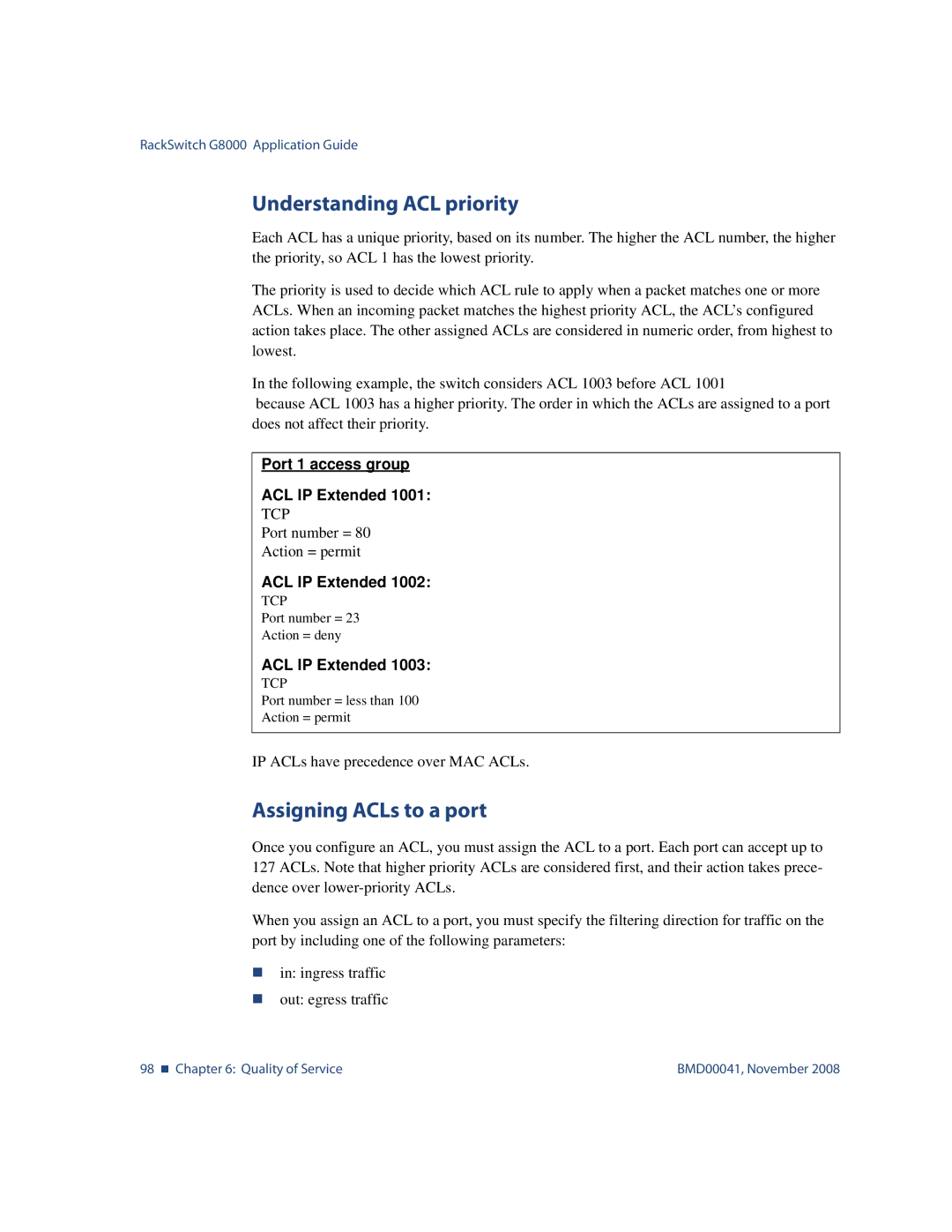
RackSwitch G8000 Application Guide
Understanding ACL priority
Each ACL has a unique priority, based on its number. The higher the ACL number, the higher the priority, so ACL 1 has the lowest priority.
The priority is used to decide which ACL rule to apply when a packet matches one or more ACLs. When an incoming packet matches the highest priority ACL, the ACL’s configured action takes place. The other assigned ACLs are considered in numeric order, from highest to lowest.
In the following example, the switch considers ACL 1003 before ACL 1001
because ACL 1003 has a higher priority. The order in which the ACLs are assigned to a port does not affect their priority.
Port 1 access group
ACL IP Extended 1001:
TCP
Port number = 80
Action = permit
ACL IP Extended 1002:
TCP
Port number = 23
Action = deny
ACL IP Extended 1003:
TCP
Port number = less than 100
Action = permit
IP ACLs have precedence over MAC ACLs.
Assigning ACLs to a port
Once you configure an ACL, you must assign the ACL to a port. Each port can accept up to 127 ACLs. Note that higher priority ACLs are considered first, and their action takes prece- dence over
When you assign an ACL to a port, you must specify the filtering direction for traffic on the port by including one of the following parameters:
in: ingress traffic
out: egress traffic
98 Chapter 6: Quality of Service | BMD00041, November 2008 |
